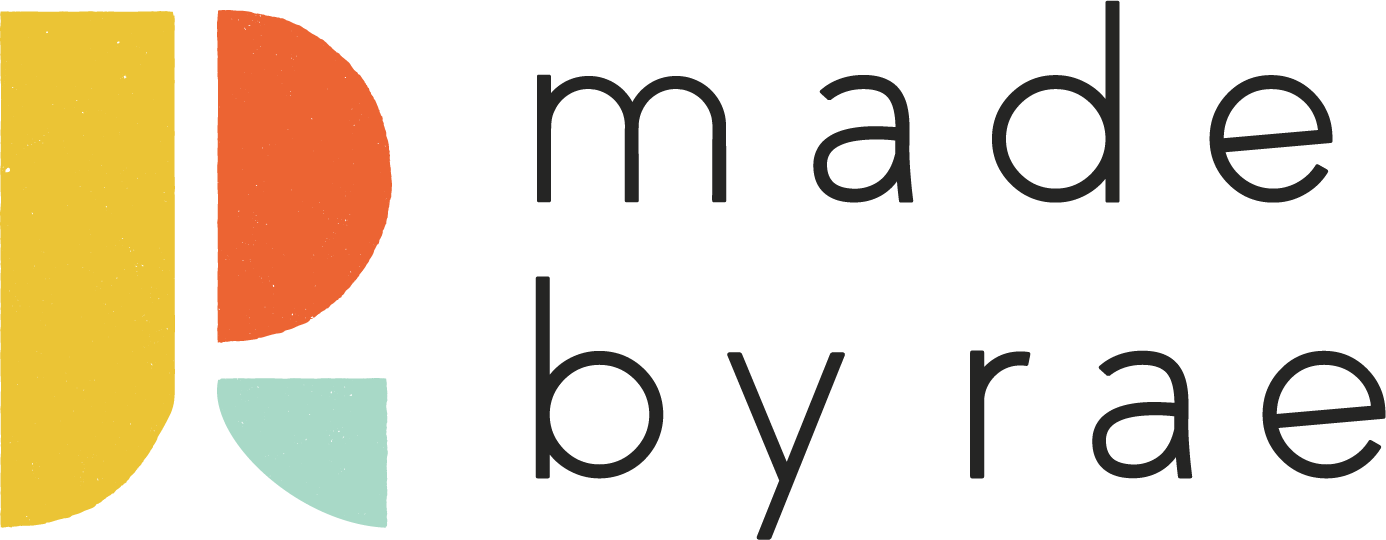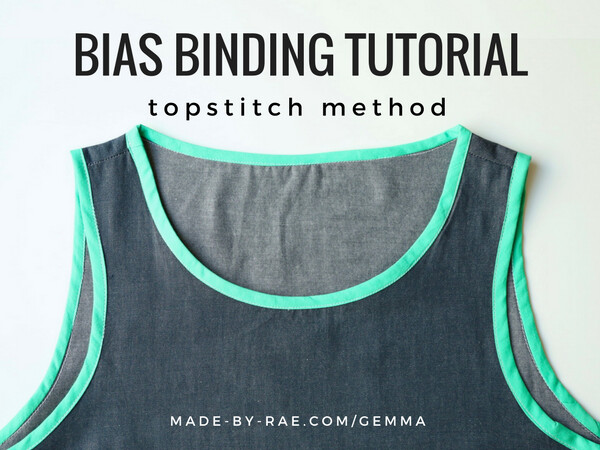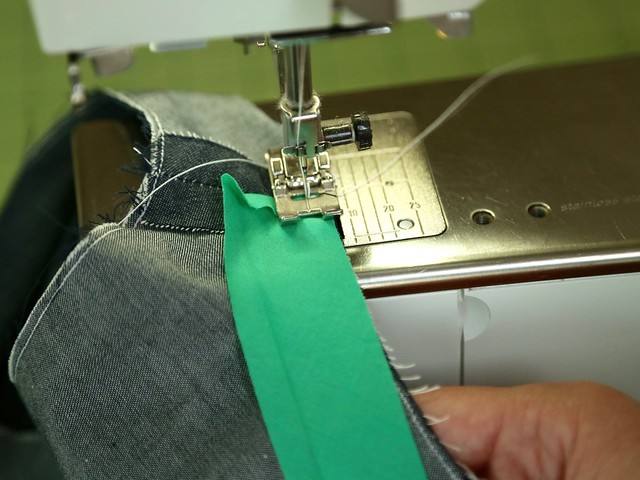Bias Binding Tutorial (topstitch method)
This is the second tutorial in my bias binding series. Many of my women's sewing patterns, including the Gemma tank shown in this post, use bias binding to finish the neckline and armholes. There are so many ways to attach bias binding, so I thought it would be great to share a few of my favorites! The traditional method outlined my preferred technique, the "traditional method," which is used in the sewing pattern instructions for Gemma, Ruby, and Josephine.
This second method I'm calling the "topstitch method," and it involves attaching the bias to the inside of the garment, flipping it to the outside, and topstitching along the folded edge to finish it (so basically the reverse of the traditional method). This method is great because it's a bit easier than the traditional method, so it's nice if you're a beginner just learning to sew with bias. You have more control over your folded edge as you sew it down because it's on top, so you don't have to worry whether you've managed the catch the edge of the binding on the inside or not.
So why isn't this one my favorite? I have a few reasons: I don't love that the stitches are visible (just a personal preference), I find it a bit harder to get this one to look smooth (with careful pinning and pressing, though, this is hardly noticeable), and I just love how the traditional method looks with rayon and lightweight fabrics. But don't worry, this one is still great!! Many people prefer this one, and you may too!
You will need:
1.25" wide bias binding* (see my handy tutorial to make your own)a garment with an unfinished neckline and/or armholes
iron + ironing surface(optional)
clear quilter's ruler
your sewing machine
*also called bias tape or bias strips
Step 1. Press 1/4" under along one edge of your binding
Using your iron, carefully press 1/4" towards the wrong side along one long edge of your bias binding. If you're new to using bias binding, you may want to have a clear ruler handy to help you figure out how wide 1/4" is. This is something that goes slow at first, but will go faster and faster once you get the hang of it. You can see the bias binding in the photo below has one edge folded under by 1/4."
Step 2. Make sure you have enough
Take your garment and make sure you have enough length to go all the way around your neckline and/or armholes. (Note: for this tutorial, I will use the neckline.) Notice that I'm also checking to see where the seams in my bias will land on the neckline. This is important; since this binding is visible from the outside, you want to try to position your bias binding so that the seams don't land in the very middle of the neckline. I often trim the binding before I begin so the seams will land where I want them to.
Step 3. Staystitch
If you haven't already, staystitch the neckline and armholes. Use a regular stitch to sew around the openings 1/8" away from the edge. This will prevent the edges from stretching out when you add the binding.
Step 4. Fold under the starting end
Take your binding and fold the end of the bias binding 1/4" toward the wrong side. Turn your garment inside-out, and place the folded end of the binding at one of the shoulder seams. Make sure the right side of the binding is facing the wrong side of the garment. Note that the folded edge you pressed in Step 1 is on the left side, and the unfolded edge is on the right. If you are binding an armhole, use the side seam as a starting point.
Step 5. Sew!
Keeping the edge of the garment lined up with the edge of the bias binding, sew them together using a scant (that means just a hair under) 1/4" seam allowance. For my machine, this is not the same as where the edge of my presser foot is, so I have to keep a close eye on the marks on the throatplate to make sure I don't go over 1/4." It's really important to go slow, keep the edges even, and not go over 1/4." I don't pin, and I don't try to stretch the bias out as I sew; maybe just a tiny bit to get the bias nice and even with the curve of the neckline. If you feel more comfortable pinning, that's fine...I just haven't found pinning to work any better than just going for it.
Note: if you'd like to add a tag to the back of a neckline, you need to put it in now (not pictured)! Pin it in place before you start sewing, then remove the pin and sew it to the neckline along with the binding when you get to it.
Continue sewing around the entire neckline or armhole.
Step 6. Overlap the ends and trim
When you get to the point you started at, continue sewing until your stitches overlap the folded portion you began with by about 1/4". Backstitch to secure your stitches, then trim the end so that it's even with the edge of the folded portion.
Step 7. Press binding away from garment
Press the binding and seam allowances upward, away from the garment. Be careful not to un-press the folded edge. Notice that there are two lines of stitches; the top one is the staystitching, and the bottom one is the binding seam.
Step 8. Pin binding to outside of garment
Turn the garment right side out and fold the binding to the outside of the garment so that it just covers the seam you just sewed. Pin all the way around, and tuck the overlapped ends together at the shoulder to reduce bulk.
Tip: Pin with the pins pointing clockwise when viewed from the outside; this will make it easy to pull them out as you sew!
Step 9. Topstitch
Stitching from the outside of the garment and removing the pins carefully as you sew, sew along the folded edge of the binding.
Step 10. Press
Give your binding a final press, step back, and admire!
A note about thread color: I used white thread for this tutorial so that you can see the progress of each step. Choose a thread that matches the binding to make this method's stitches blend in.
A note about those ends: In this case, the ends of the bias binding are simply overlapped and stitched down. In the next tutorial, I'll show you how to join the ends before attaching the binding so you'll get an even smoother finish. Ready to sew up a level? You can try it with this technique, too!
Want to see another example of this topstitch method in action? Check out Jess's linen Gemma with yellow binding; it looks fantastic!
bias binding tutorials made by rae















